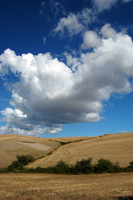- England
- Scotland
- France
- Holland
- Germany
- Italy
- Spain
- Portugal
- USA
- China
- Japan
- India
- Iran
- Advice
- Gardens
- England
- Scotland
- France
- Holland
- Germany
- Italy
- Spain
- Portugal
- USA
- China
- Japan
- India
- Iran
- Advice
- Garden Tours
Book: Landscape Planning and Environmental Impact Design: from EIA to EID
Chapter: Chapter 2 Landscape plans for public goods
Spatial design for rural areas has received less attention than spatial design for urban areas. Before the eighteenth century, cities were seen as the great centres of art and civilisation (Olsen, 1986). Appreciation of rural space developed slowly. Renaissance designers included views of the surrounding area in their garden planning. Baroque designers pushed avenues out into the countryside. English landscape designers, in the eighteenth century, saw that "all nature is a garden". After a century of innovation, English landscape designers formulated the first complete theory of spatial design for rural areas, which will be discussed in Chapter 3. An important residue of this theory is the modern idea that the spatial pattern for rural areas is a matter of public policy. The scale of rural areas tends to be large, but the components are not dissimilar to those in urban areas: woods, mountains, buildings, walls, fences and hedgerows. The way in which these elements come together to make space can be appreciated in valleys. If the valley is blanketed with trees or buildings, the shape is concealed. Even if it is only the roads and paths which are lined with spatial barriers, the valley is lost to the public. It ceases to be a public good.
